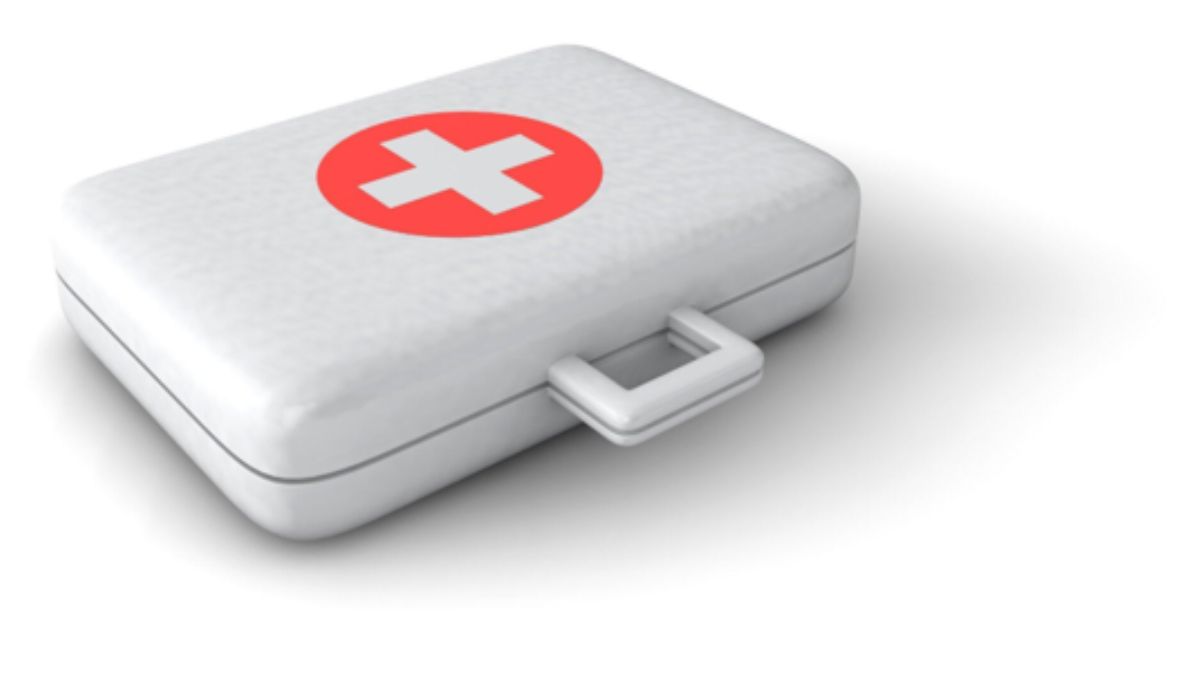HEALTH
Navigating Teething: Understanding Symptoms and Soothing Techniques

Teething is a significant milestone in a baby’s early development, marking their transition from gumming soft foods to biting into solids. Although this natural process is essential for oral health, it often brings discomfort that can challenge both babies and their parents. Typically starting around six months, teething varies from child to child, with some babies experiencing symptoms earlier or later than others. Understanding the teething process is crucial for parents, as it helps them provide the best care during this time of change.
As babies begin to teeth, they may show various signs and symptoms, including drooling, irritability, and changes in sleep patterns. These common indicators can leave parents feeling overwhelmed and unsure of how to help their little ones cope. However, being informed about teething can alleviate parental worries and create a more comfortable environment for children. This blog will explore the teething process, common symptoms, and effective remedies to soothe a teething baby, as well as when it may be necessary to seek professional advice.
Navigating the teething phase can seem daunting, but with the right knowledge and tools, parents can effectively support their babies through this significant developmental milestone. By understanding what to expect and how to respond, caregivers can help ease their baby’s discomfort and foster a positive experience during this natural stage of growth. In the following sections, we will provide practical tips and insights to empower parents as they face the challenges of teething.
Understanding the Teething Process
Teething is the process by which an infant’s primary teeth, often referred to as baby teeth, emerge through the gums. Typically, this begins around the age of six months, although some babies may start earlier or later. The average timeline for tooth eruption varies, but most children will have a complete set of primary teeth by the age of three. These teeth play a vital role in a child’s oral development, aiding in proper chewing and speaking.
During teething, babies may experience discomfort as their teeth break through the surface of their gums. The pressure can cause inflammation and soreness, leading to a variety of symptoms. It’s important for parents to recognize that this process is entirely normal. Understanding how teething works can help alleviate concerns and equip parents with the knowledge needed to support their children during this phase. As each tooth comes in, parents will notice slight variations in symptoms, but a consistent understanding of what to expect can make this journey a little easier.
Common Symptoms of Teething
As babies begin to teeth, they may exhibit several common symptoms. One of the most noticeable signs is increased drooling. Parents might find that their baby’s clothes are frequently damp from saliva. This drooling can sometimes lead to mild rashes around the mouth or chin, so it’s essential to keep the area clean and dry. Additionally, teething babies often become more irritable or fussy than usual. The discomfort from their gums can make them restless and unhappy, leading to sleepless nights for both babies and parents.
In addition to drooling and fussiness, swollen or sensitive gums are also common indicators that a baby is teething. When you gently touch your baby’s gums, they may feel swollen or warm. This is completely normal as the teeth work their way through the soft tissue. Some parents might also notice changes in their baby’s eating or sleeping habits during this time. Babies may refuse to eat due to the discomfort or may wake up more frequently at night. If parents observe any unusual symptoms, such as a high fever or persistent diarrhea, it’s wise to consult a doctor for professional advice. Additionally, if you’re looking for specific recommendations tailored to your home environment, you might also consider searching for a pediatrician near me who can provide guidance on your baby’s health and comfort.
Effective Remedies to Soothe a Teething Baby
When it comes to soothing a teething baby, several effective remedies can provide relief. One popular option is to use chilled teething rings or toys, which offer a cool surface that numbs the gums and alleviates discomfort. Additionally, many parents find that giving their baby a cold washcloth to chew on is beneficial. By simply wetting a clean washcloth and chilling it in the refrigerator, parents can create a soothing tool that babies often enjoy gnawing on.
Moreover, gentle gum massage can be an effective technique for providing comfort. Parents can use clean fingers to apply gentle pressure to their baby’s gums, helping to relieve some discomfort and create a calming sensation. For older infants who have started eating solids, offering soft, cold foods like chilled applesauce or yogurt can also help soothe sore gums. However, it’s crucial to consult a children’s doctor before introducing any new foods to ensure they are appropriate and safe for your baby.
Incorporating these soothing methods can make a significant difference during the teething phase. By combining chilled toys, gentle massages, and appropriate cold foods, parents can help ease their baby’s discomfort. Ultimately, staying informed and attentive to your baby’s needs will support them through this challenging yet natural stage of development.
When to Consult a Doctor
While teething is a normal developmental stage, there are specific signs that warrant a visit to the doctor. Parents should be alert for symptoms such as a high fever, excessive drooling, or prolonged irritability. If a baby develops a fever above 100.4°F (38°C) or experiences extreme fussiness that doesn’t improve with typical soothing methods, it’s essential to seek medical advice. Consulting a doctor can help determine if the symptoms are genuinely related to teething or if another underlying issue might be at play.
If parents have concerns about allergies or unusual symptoms occurring alongside teething, they may want to consult an allergist near me. Allergies can sometimes manifest in ways that overlap with teething symptoms, leading to confusion for parents trying to navigate their baby’s discomfort. Seeking the expertise of a healthcare professional can provide peace of mind and help parents address their child’s needs effectively. Regular check-ups with a pediatriciancan also ensure that your baby is developing healthily and that any concerns about teething are managed appropriately.
Additional Support and Resources for Parents
Parenting can often feel overwhelming, especially during challenging times like teething. Seeking support from fellow parents can be incredibly beneficial. Many online forums and local parenting groups offer a platform for sharing experiences and advice. Engaging with other parents who have navigated similar challenges can provide comfort and practical tips. Additionally, many communities offer resources for finding pediatricians or children’s doctors who specialize in infant care, which can be invaluable for first-time parents.
Staying informed is key when it comes to managing your baby’s health during teething. Many parents find that reading books or articles about child development helps them understand what to expect. Local health clinics or community centers often host workshops or parenting classes focused on child development, which can be a great resource. Moreover, maintaining an open line of communication with your pediatrician can ensure that you are up to date on best practices for soothing a teething baby and addressing any other health concerns that may arise.
Final Thoughts
Teething is a natural and essential part of a baby’s growth journey, but it can present challenges for both babies and their parents. By recognizing the signs and symptoms of teething, caregivers can better understand what their little ones are going through and take proactive steps to provide relief. Whether through chilled toys, gentle massages, or soft foods, there are various effective remedies available to help soothe discomfort during this time.
Additionally, it’s crucial for parents to remain vigilant and consult professionals if they notice any unusual symptoms or have concerns about their baby’s health. Seeking guidance can ensure that teething symptoms are managed appropriately and any underlying issues are addressed. Parenting can be overwhelming, but staying informed and connected with resources can significantly ease the journey through teething and beyond.
Ultimately, with patience, understanding, and the right strategies, parents can help their babies navigate the teething process more comfortably. By fostering a supportive environment and being attentive to their needs, caregivers can turn this challenging time into a rewarding experience that strengthens the bond between them and their little ones.
HEALTH
What You’ll Learn in CPR & First Aid Training Courses

Have you ever wondered what you would do if someone collapsed in front of you or had a serious injury? It’s a scary thought, but being prepared makes a huge difference. CPR & First Aid training courses teach you exactly how to handle emergencies like this.
In this blog post, you’ll discover what skills you’ll learn, how these courses work, and why this training is so important. By the end, you’ll feel ready to take the next step toward saving lives.
Learn to Act Fast in Emergencies
One of the first things you’ll learn in CPR & First Aid training is how to stay calm when an emergency happens. These courses show you how to think clearly and take action when seconds matter. Whether someone has trouble breathing, is bleeding badly, or has passed out, knowing what to do right away can help save their life.
You’ll learn how to assess the situation, check for danger, and start helping before professionals arrive. These steps can make all the difference.
Discover the Power of CPR
CPR stands for Cardiopulmonary Resuscitation. It sounds complicated, but you’ll learn that it’s easy to do. CPR is a method used when a person’s heart stops beating.
You’ll find out how to push down on the chest in a steady rhythm and how to give breaths if needed. These actions help move oxygen through the body until help comes. CPR is a lifesaving skill, and anyone can do it once they are trained.
Understand How to Use an AED
An AED is a device that gives a shock to the heart to help it start beating again. During your training, you’ll learn how to use it step by step. The machine talks to you and tells you what to do, which makes it easier.
You’ll also learn where to find AEDs in public places and why quick use is so important. Using an AED right away can increase a person’s chances of survival, and you’ll be ready to do just that.
Learn to Handle Common Injuries
Every day, accidents happen all the time. Someone might cut themselves, fall, or have a burn. In CPR & First Aid training, you’ll learn how to help with these injuries.
You’ll find out how to clean and cover a wound, treat a burn, or wrap a sprain. You’ll also learn what not to do so you don’t make things worse. Knowing how to give the right care right away helps someone feel better and heal faster.
Be Ready for Choking and Allergic Reactions
Choking is another emergency that can happen suddenly. These courses show you how to spot the signs and what to do to help. You’ll learn how to perform back blows and the Heimlich method.
Allergic reactions can also be dangerous. You’ll learn how to use an epinephrine auto-injector and how to help the person stay safe until help comes. These are real situations that anyone could face, and now you’ll know what to do.
If you’re curious about even more topics covered in these lessons, get more info by visiting your local training center or health organization.
First Aid Training: The Power to Save Lives
Taking CPR & First Aid training courses gives you the skills to help others during some of life’s scariest moments. You don’t need to be a doctor or nurse. Just knowing what to do during an emergency can save lives.
These courses help prepare you for real-life emergencies in a simple, hands-on way. Did this guide help you? Browse the rest of this section for more advice on a variety of topics.
HEALTH
The Role of Community in Veteran Health and Wellness

Did you know that a strong community connection can play a transformative role in the health and wellness of our veterans? In recent years, studies have shown that social integration significantly boosts mental health and overall well-being, especially for those who have served in the military.
Veterans often face unique challenges, and having a supportive community can be a crucial factor in their recovery and sustained health. This article explores the vital importance of a community in veteran health and how senior living options can enhance their overall quality of life. Keep on reading.
The Importance of Community in Veteran Well-Being
For veterans transitioning back into civilian life, the shift can often feel overwhelming. Many struggle with feelings of isolation and alienation from those who haven’t shared similar experiences. This is where a sense of community becomes essential.
A supportive network helps veterans feel connected and valued. In senior living environments, fostering a community spirit can lead to:
A Sense of Belonging
Veterans often feel better when they know others share their past. Living with peers who understand can make them feel safe. This helps build real friendships and trust.
Improved Mental Health
Being around others can ease sad or anxious thoughts. Talking, laughing, and sharing stories helps the mind. These small moments lift spirits each day.
Physical Health Benefits
Group activities like walks or games keep the body moving. Staying active with others can be more fun. It helps veterans stay strong and feel better.
Easy Access to Resources
A strong group can guide members to helpful tools. It’s easier to ask for help when others understand. Veterans find what they need without feeling lost.
How Senior Living Enhances Social Connections
Many places where seniors live are made to feel like a strong community. Some have special programs just for veterans. These programs help them feel supported and connected with others.
There are group trips, fitness classes, and other fun things planned for veterans. These keep them busy, happy, and moving. It also helps them meet people who understand them.
Some places also give extra care for mental health. Veterans can talk to people who know about things like PTSD. Being around others with similar stories can help them feel less alone.
Building Supportive Care Frameworks
Supportive care is more than just meeting physical needs; it’s about holistic wellness that encompasses emotional, mental, and social aspects. Within a community-focused approach, veterans can tap into:
- Peer support groups
- Integrative wellness programs
- Access to healthcare
The Unique Proposition of Community-Focused Senior Living
Choosing a senior living arrangement that emphasizes community focus provides veterans with the unique opportunity to enhance their quality of life. Not only can they maintain independence, but they can also engage in a variety of activities designed to foster relationships and an active lifestyle.
Facilities that prioritize a community focus in veteran health often include programming tailored specifically for them. They offer more than just a place to live. Veteran programs for seniors create a supportive atmosphere promoting veteran wellness through engagement, shared experiences, and friendship.
Invest in Your Health and Well-Being Today!
If you or a loved one is a veteran looking for a welcoming community, consider exploring options that offer comprehensive support and a vibrant community in veteran life. With a focus on wellness and connection, you can conquer the challenges of daily living and thrive among peers who understand and appreciate your journey. Your health and well-being deserve a community that cares.
For more related topics, check out the rest of our blog!
HEALTH
How Cannabis Extracts are Redefining Medical Applications

How can one plant help with so many health needs?
Cannabis extracts are now used in new ways to treat different medical problems. These extracts come in forms like oils, drops, and pills. Many people use them to feel better without strong drugs.
Doctors and patients are starting to see the value of these products. They are easy to use and made with care. If you’re looking for new ways to feel better, cannabis extracts might be worth a try. Want to learn more about how they work and how they can help? Keep reading!
Managing Pain
Many people deal with pain each day, and finding safe ways to manage it matters. Cannabis extracts are giving new hope by offering support for pain that doesn’t always respond to common treatments.
These extracts may help with joint pain, nerve pain, and pain from injuries. They work by interacting with the body’s systems in a natural way. Unlike some strong drugs, they are less likely to cause harm with long use.
Doctors are now looking at these extracts as a helpful tool for people with ongoing pain. As more studies are done, more is learned about their benefits. To stay informed about growing options for care, reading articles like these can help guide smart choices.
Helping with Sleep
Trouble falling asleep or staying asleep can affect daily life. Cannabis extracts are now being used to support better sleep by helping the body relax at night. Some people say they fall asleep faster and wake up less often.
These extracts may work by calming certain parts of the brain that stay active during rest. Many users prefer them over common sleep aids because they feel more natural. They are often taken as drops or capsules before bedtime.
People who have tried other sleep methods without success are now turning to this option. As more is learned, cannabis extracts may become a trusted part of nightly routines. For those hoping to wake up feeling more rested, they could be a step toward better sleep.
Easing Anxiety and Stress
Busy days and constant pressure can lead to feeling overwhelmed. Cannabis extracts are now being used to help ease anxiety and lower stress levels. Some people say they feel calmer and more balanced after using them.
These extracts may work by helping the brain respond better to stress signals. They are often taken in small amounts during the day and may support a more peaceful state of mind in daily life.
Supporting Appetite and Nausea Relief
Feeling sick or not wanting to eat can make recovery harder. Cannabis extracts are now being used to help reduce nausea and improve appetite. This can be helpful for people going through treatments that make eating difficult.
The extracts may work by calming the stomach and making food seem more appealing. They are often taken in small doses and come in easy-to-use forms. For some, they offer simple support during times of low appetite or queasiness.
Exploring New Paths with Cannabis Extracts
Cannabis extracts are opening new doors in medical care, offering support in ways that were once hard to find. From easing daily struggles to helping with serious health challenges, these extracts are changing how treatment can look and feel.
Their growing use shows how natural options are becoming part of trusted care plans. As research continues, more people may find comfort and balance through these products. Exploring new paths with cannabis extracts in modern care shows how far healing can go.
Did you find this article helpful? Visit our website for more awesome content like this.
-

 HEALTH1 year ago
HEALTH1 year agoIntegrating Semaglutide into Your Weight Loss Plan: A Practical Guide
-

 HOME IMPROVEMENT1 year ago
HOME IMPROVEMENT1 year agoHow to Choose the Perfect Neutral Area Rug for Every Room
-

 LAW1 year ago
LAW1 year agoPost-Divorce Considerations in California: Modifications and Long-Term Planning
-

 LAW1 year ago
LAW1 year agoTeenage Drivers and Car Accidents in California: Risks and Parental Liability
-

 CONSTRUCTION1 year ago
CONSTRUCTION1 year agoConstruction Site Safety Regulations in New York and Your Rights as a Worker
-

 FINANCE1 year ago
FINANCE1 year agoDigital Asset Management in Florida Estate Planning
-

 LAW1 year ago
LAW1 year agoKentucky’s School Football: Concussions, Injuries, and Legal Options
-

 LAW1 year ago
LAW1 year agoGang Activity and Criminal Charges in CA: Protecting Your Rights
